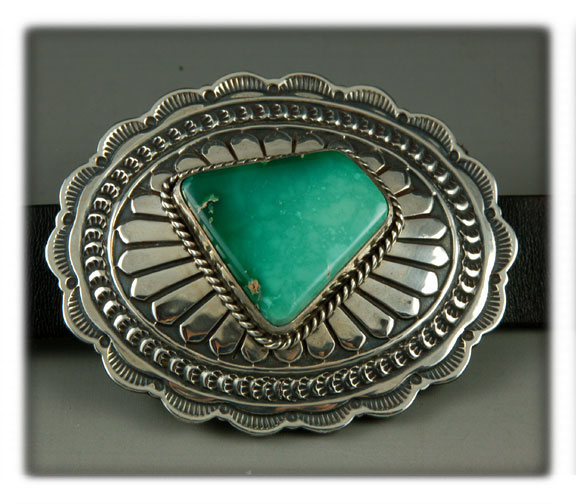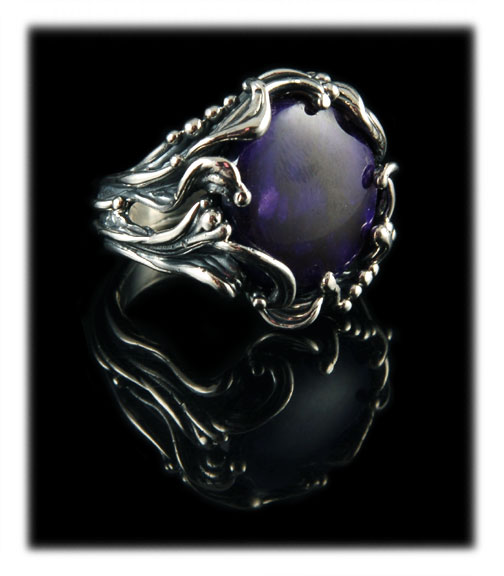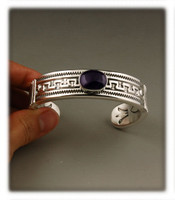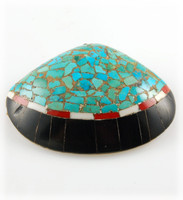 Loading... Please wait...
Loading... Please wait...- 970-759-1040 Text / Voice
- Gift Certificates
- My Account
Currency Displayed in
Categories
Techniques of Making Southwestern Jewelry
Posted by Dillon Hartman on May 10th 2018
Techniques of Making Southwestern Jewelry
Hammer Work
Hammer work is done a variety of special hammers and a base that metal sits against while it is being worked. The term “hammer work” is a generalized term used for the process of stamping, filing and repousse. Stamp and file work designs are some of the most classic Southwestern jewelry styles, and actually are ancient techniques used worldwide. The designs can be very simple or very complex depending on the artisan.

Stamp Work
Stamp work is done using metal stamps, each with a unique tip. The metal stamps can be handmade or machine made which gives them a wide spectrum of design. Many jewelers make their own basic stamps out of tool steel, old tools, or rebar. With each stamp, jewelry artistsans create beautiful designs using this repeated technique in patterns. Stamp patterns can be as simple as a sunburst on a metal bracelet to intricate portraits and landscapes- all done with a single or multiple stamping tools.
Repousse
Repousse is also known as forge work. It is a technique done using a hammer to shape metal into jewelry pieces. Unlike stamp and file work (processes of stamping designs into metals), repousse work is created when the artist uses a hammer and post on one side of the piece and some kind of shaped template on the other side. The metal takes the shape of the desired template, leaving large indentions. It is these indentions that form various patterns.
File Work and Saw Work
File work and saw work are techniques using each of these tools usually in unison to create designs in a piece of jewelry with negative space give texture and pattern to the piece. These tools can be used for all sorts of designs, from sawn out pictorial pieces which are overlain, to accentuating stamp designs, to cleaning up designs, to make unique shapes in a piece. File work is also used to file, shave or scratch the metal to create a distinct, worn look.

Wax Carving
This is a technique in which an artist takes a chunk of wax and carves their design from the chunk. This technique can be used to carve out fancy and intricate designs such as realistic 3D animals and abstract pieces. Once these pieces are carved they are them cast into metal. These designs can then have a mold made to reproduce, or may become a one of a kind piece if a mold is never taken.
Lost Wax Method
This is a technique in which an artist takes a gemstone and builds up wax around the particular stone to create a piece. This piece will become a one of a kind work of art. The wax piece is placed on a tree with other pieces. Once the tree is full it is put in a can which is then filled with a Plaster of Paris like substance. Once the substance has hardened the can is placed in a kiln and the wax is burnt out. The master pattern is lost at this point.
Cast Work
Casting is a process of heating and melting metal until it is able to be poured. It is then slowly poured into a mold where it then cools. Once cooled, the mold can be removed, leaving behind the newly formed desired shape. There are three basic types of casting used in Southwestern jewelry; tufa casting, sand casting, and machine casting. Depending on the type of mold that is used, the cast piece can have an array of different textures. This is the process in which jewelry charms are made in addition to modern Native American jewelry pieces.
Machine Casting
Machine casting is done with prefabricated molds that can be reused many times. Because these molds allow for mass-production, the process is frowned upon in the Native American jewelry industry, but often used and unspoken. With the ease of this process, many companies saturate the market with these cheap reproductions.
BEWARE : Many collectors and galleries feel that instead on buying a unique, handmade, genuine Native American piece of jewelry, consumers are buying a factory-made knockoff. This is false advertising. This is simply another form of creation used by almost all artisans. These pieces are not cheap knockoffs. They have the same quality as a handmade piece and usually have no flaws. The price of these casted pieces should be cheaper as they are not one of a kind pieces and are faster to make, so there is less time involved.
There is a lot of misunderstanding and false advertising in the Native American Jewelry industry about this. Do not be victim. There is nothing wrong with a casted piece. Just be aware that it is not a one-of-a-kind piece and should be much cheaper.
Tufa Casting
Tufa casting is similar to sandcasting, but in this process a stone called tufa is used to do the cast work. Tufa is very fragile and has a tendency to crack so molds made from this stone are unable to be used multiple times. Instead, this process is used for those who want to make a truly unique, one of a kind piece. To prove that there is only on piece like it in existence the tufa block is commonly given with the finished artwork.
Sandcasting
Sandcasting an art that uses worked blocks of sandstone as metal molds. Depending on the complexity of the piece, this process can take anywhere from a few hours to a couple of months. The skill level of the artist is also a factor in how long the process takes.







